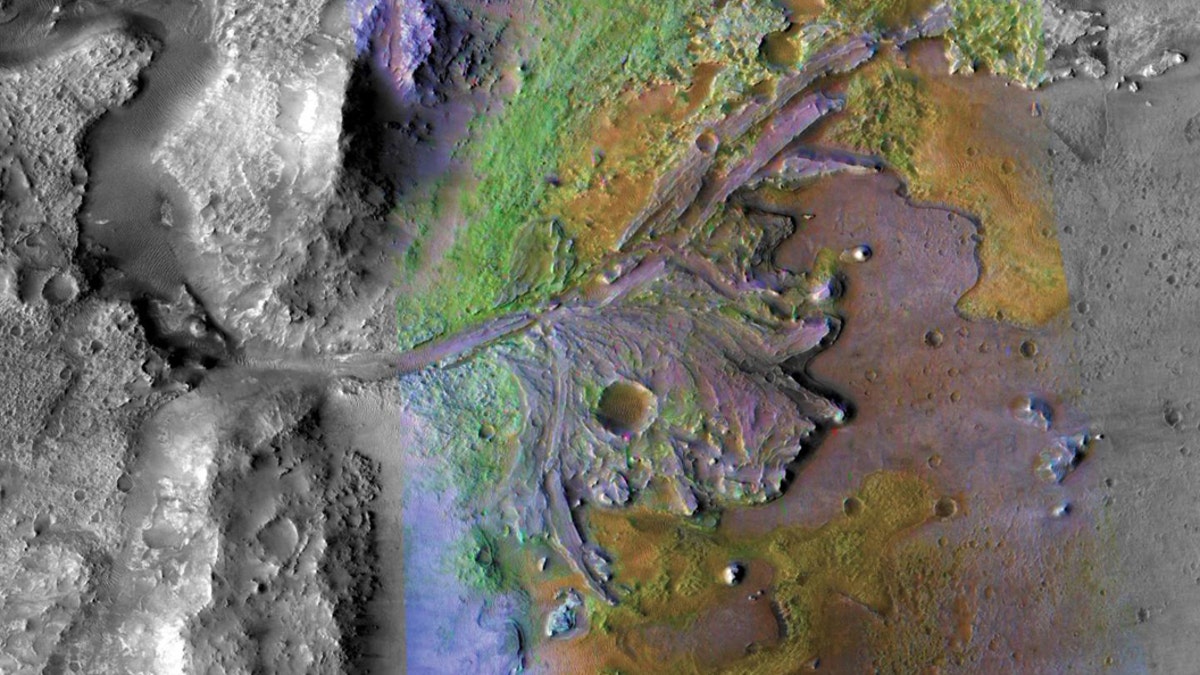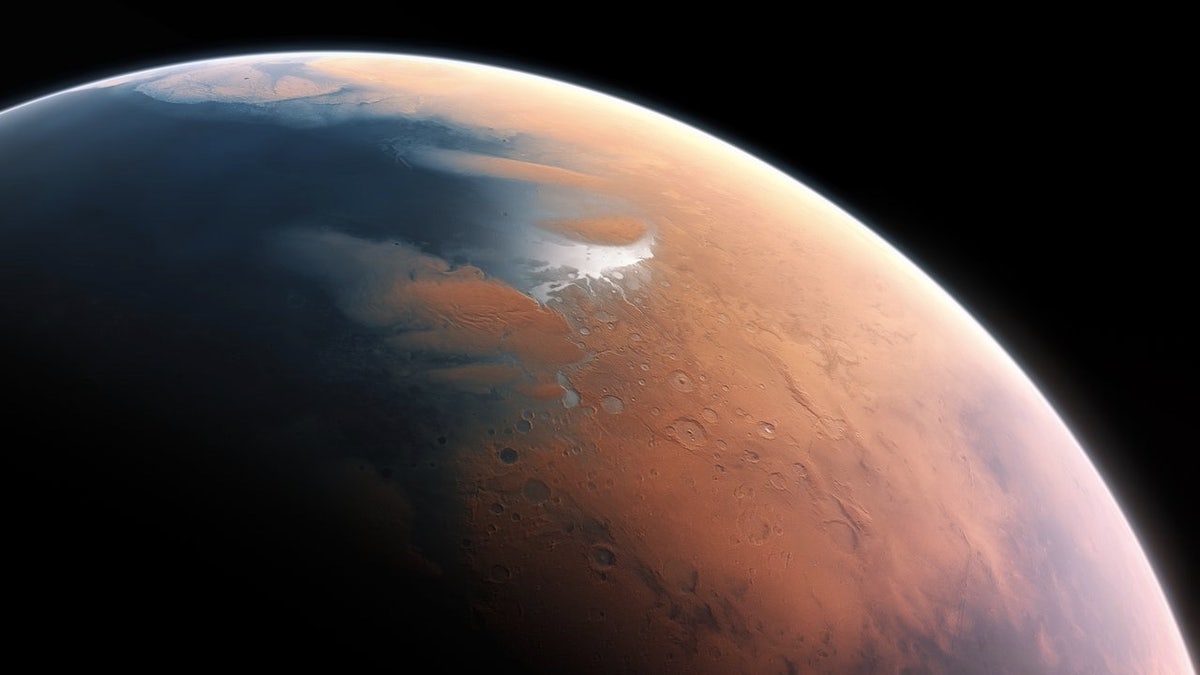Fox News Flash top headlines for August 27
Fox News Flash top headlines for August 27 are here. Check out what's clicking on Foxnews.com
It's long been established that Mars once had water on its surface. But a new study suggests that between 3 and 4 billion years ago, the Red Planet was warm and wet enough to have massive rainstorms and flowing water, an environment that may have supported life.
The new study, presented at the Goldschmidt Geochemistry Conference in Barcelona, compares mineral deposit patterns on Mars with those seen on Earth to support the hypothesis.
"We know there were periods when the surface of Mars was frozen; we know there were periods when water flowed freely," Purdue University professor Briony Horgan said in a statement.

This is the site of the Mars 2020 landing. Chemical Alteration by Water, Jezero Crater Delta: On ancient Mars, water-carved channels and transported sediments to form fans and deltas within lake basins (color enhanced to show mineral types). (Credit: NASA/JPL-Caltech/MSSS/JHU-APL)
CAUSE OF MYSTERIOUS METHANE SPIKES ON MARS STILL UNKNOWN
Horgan continued: "But we don't know exactly when these periods were, and how long they lasted. We have never sent unmanned missions to areas of Mars which can show us these earliest rocks, so we need to use Earth-bound science to understand the geochemistry of what may have happened there. Our study of weathering in radically different climate conditions such as the Oregon Cascades, Hawaii, Iceland, and other places on Earth, can show us how climate affects pattern of mineral deposition, like we see on Mars."
By analyzing patterns seen in the Martian mineral data that has been collected by the Curiosity rover and NASA's CRISM spectrometer and comparing it with those seen in the various locales on Earth, researchers found evidence that Mars had at least one extended period of rainstorms and flowing surface water.
"Silica signatures have been identified from orbit on Mars in Amazonian periglacial terrains, and the Curiosity rover has identified silica-rich poorly crystalline materials in Hesperian lake sediments in Gale crater," the study reads. "We suggest that these amorphous phases on Mars could have formed in cold climates during punctuated melt events. However, the most common Noachian alteration signatures are crystalline clay minerals in compositionally zoned stratigraphies, for which the closest terretrial [sic] analogs are deep weathering profiles only known to form under persistent rain-dominated climates."
"If this [silica signatures] is so, it is important in the search for possible life on Mars," Horgan added.

This artist’s impression shows how Mars may have looked about 4 billion years ago when almost half the planet’s northern hemisphere could have been covered by an ocean up to a mile (1.6 kilometers) deep in some places. (ESO/M. Kornmesser)
For years, scientists have generally acknowledged that water existed on Mars, including recent evidence of clay spotted by the Curiosity rover. However, up until now, scientists have debated what Mars' climate was like, whether the water was frozen or the planet had warm temperatures and conditions to let the water flow and potentially support life.
Even if conditions on Mars used to support flowing water, that's no longer the case. According to Space.com, present-day Mars has an average temperature of approximately negative 80 degrees Fahrenheit. Add in the planet's thin atmosphere that is largely made up of carbon dioxide, and it's difficult for Mars to support life as we know it.
Horgan continued that researchers understand that the building blocks of life on Earth "developed very soon" after the planet's formation, adding that flowing water is "essential for life's development."
"So evidence that we had early, flowing water on Mars, will increase the chances that simple life may have developed at around the same time as it did on Earth. We hope that the Mars 2020 mission will be able to look more closely at these minerals, and begin to answer exactly what conditions existed when Mars was still young".
MYSTERIOUS 'STAR TREK LOGO' SPOTTED ON MARS BY NASA
NASA hopes the Curiosity rover, which "has a few more years before its nuclear power system degrades enough to significantly limit operations," can provide additional clues about the planet prior to the launch of the Mars 2020 rover mission.
Mars looms ever larger in America’s space future.
In November, NASA announced that it had selected the location where its Mars 2020 rover will land on the Red Planet. The rover is expected to reach the Martian surface on Feb. 18, 2021. NASA’s long-term goal is to send a manned mission to Mars in the 2030s.
However, former astronauts, including Apollo 11 astronaut Michael Collins, think we should skip a return mission to the Moon, slated for 2024, and "shoot directly for Mars."

